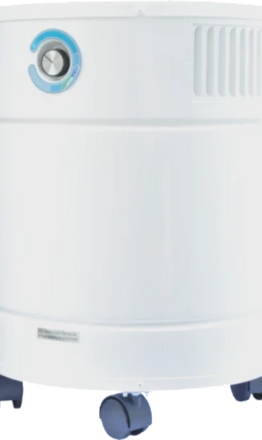Marijuana Smell?
Why You Need Cannabis Odor Control

Cannabis has a unique and rather pungent smell. Some people describe it as skunky, others absolutely love it. But no matter what you think about it, it’s too potent a smell to ignore.
With more and more countries like Canada legalizing marijuana, Cannabis smell is becoming more of an issue in densely populated areas.
What Makes Cannabis Smell?
The word “Cannabis” comes from the Hebrew expression Kneh-Bosm, which literally translates into “aromatic reed.”
The smell actually comes from terpenes, tiny volatile molecules created by the cannabis plant. These terpenes are the aromatic component of the plant’s essential oils. Biologically, they function as deterrents for predators like insects or mammals. While cannabis plants produce more than 1,000 different types of terpenes, only a few can be distinguished by the human nose. Two prominent examples are limonene and pinene.
Why is Cannabis Odor Control Important?
Different strains of marijuana produce different amounts of terpenes and degrees of odor. However, marijuana growers (who cultivate the plant not for its fiber and edible seeds but mostly for its psychotropic effects of tetrahydrocannabinol or THC) often choose the most potent strains, which might lead to official complaints from people exposed to the smell in the surrounding areas.
And they won’t look for less potent plants anytime soon, if the results of a recent study have anything to say about it. Why? Because smell might be a perceived indicator of quality, researchers determined in the study. When participants had to describe the smell of different strains of marijuana using 48 different sensory traits, it became apparent that the more potent marijuana varieties sparked more interest and a willingness to pay higher prices.
Study Describes Cannabis Smell
At wine tastings, connoisseurs might describe the liquid offerings as oaky or fruity, with a hint of blackberry or walnut etc. In the cannabis smell study, participants used similar sensory traits for pot.
The most commonly used ones were earthy, herbal and woody, while flowery, citrus and pungent were also used quite often. Interestingly enough, they also described the marijuana samples with sensory traits like diesel, chemical, tobacco, ammonia and tar, which are arguably quite unpleasant (and possibly dangerous) to people in the neighbourhood.
Managing Cannabis Odor is Good Business
Taking control of strong cannabis smells is a good idea if growers want to stay in business.
In 2016, one of North Denver’s largest growing operation was ordered to shut down after residents complained of the pungent smell. The case marked one of the first instances that a routine license renewal was refused. The complainants had said that the smell was affecting the quality of life of residents living nearby and made it difficult to improve the community. Luckily, marijuana growers can control the air quality in their facilities quite easily.
The Most Effective Filters For Cannabis Odor
According to a leading cannabis user magazine, Leafly, one of the most popular and efficient ways to control cannabis odor in a growing environment is to use a carbon filter.
The cannabis plants’ odor-causing molecules, terpenes, can effectively be trapped by a deep-bed activated carbon filter. The extremely porous activated carbon adsorbs the volatile organic compounds and traps them on its vast surface area.
If growers opt for a combined HEPA and carbon filter, they can not only control the cannabis smell, but also airborne particles and dust as well as microorganism that could harm the plants.
Marijuana growers have a lot of conditions to manage in their growing environment, including the right amount of humidity, light and watering. Air quality is just one other aspect of the business they need to take into account to be successful.
Related products

AirMedic Pro 5 HDS - Smoke Eater Air Purifier

AirMedic Pro 5 Ultra S - Smoke Eater Air Purifier





